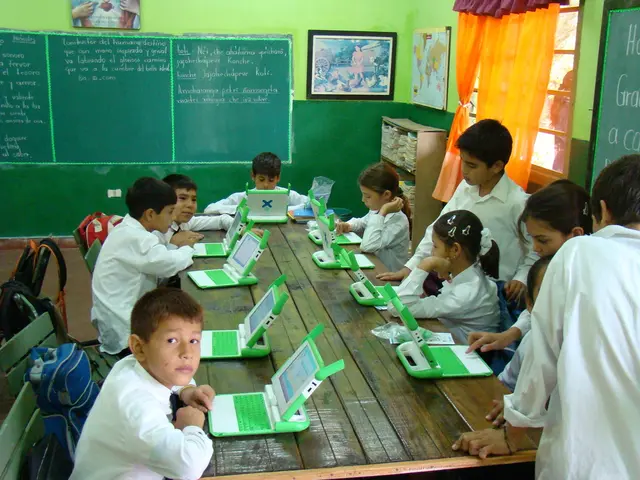The Boundaries of AI's Influence in Materials Research
In a groundbreaking development, a team of researchers from Friedrich Schiller University Jena and international partners have conducted the first systematic investigation into the performance of AI models in chemistry and materials science. The study, which includes contributions from institutions like the University of Osnabrück, aims to determine if these models have the potential to support researchers in their daily work, from literature evaluation to data analysis.
The research reveals that while AI models perform reliably in recognising laboratory equipment and extracting standardised data, they show weaknesses in spatial analyses and connecting different information sources. This indicates room for improvement in data integration, a crucial aspect for the future of scientific assistance systems.
The innovative evaluation method developed in the study, known as the "MaCBench" procedure, enables the systematic analysis of the strengths and weaknesses of current AI systems in scientific applications for the first time. The method covers over 1,100 realistic tasks from three central areas of scientific work, including analysing spectroscopy data, evaluating laboratory safety, interpreting crystal structures, and more.
Dr. Kevin Maik Jablonka, leader of a Carl Zeiss Foundation junior research group, explains the methodological innovation of the study. He summarises that before AI systems can be reliably used in research, their spatial perception and integration of different types of information must be fundamentally improved.
The study findings suggest that modern AI-based language-image models can perceive visual and textual information well, but have limitations in complex scientific processes. The models' performance strongly correlates with the frequency of test materials on the internet, suggesting they may rely on pattern recognition from training data.
The new study provides concrete ways to address these challenges and improve AI tools for the sciences. The research underscores the need for improving spatial perception and the integration of different types of information in future scientific AI assistants.
The study's results also highlight the great potential for one of Germany's central future industries: digitalization, AI, and quantum computing in analytical and laboratory technology. As multimodal AI systems that can understand both text and images are considered the future of scientific assistance systems, the findings pave the way for significant advancements in this field.
To learn more about the "MaCBench" evaluation method, visit https://macbench.lamalab.org.
Read also:
- Understanding Hemorrhagic Gastroenteritis: Key Facts
- Stopping Osteoporosis Treatment: Timeline Considerations
- Tobacco industry's suggested changes on a legislative modification are disregarded by health journalists
- Expanded Community Health Involvement by CK Birla Hospitals, Jaipur, Maintained Through Consistent Outreach Programs Across Rajasthan







